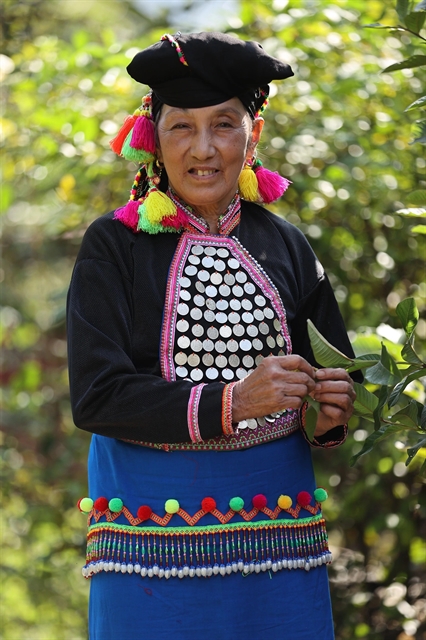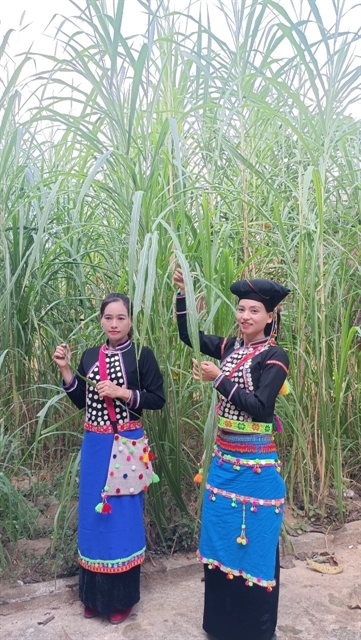 Sunday/Weekend
Sunday/Weekend

by Trần Công Đạt
If you visit Mường Tè District in the northwestern province of Lai Châu and see girls wearing white or black headscarves, with sparkling coins on their chests and skirts of blue cloth in brilliant patterns, you will immediately know they are ethnic Si La girls.
The costumes of the Si La people do not have too many patterns but are delicate, sophisticated, and charming. Although they no longer know how to weave fabric, the Si La still keep their traditional costumes.
In particular, they wear very sophisticated headscarves to distinguish between the married and unmarried.
“There are two types of scarves that Si La women wear on their heads. The white scarf and black scarf. The white one is for young girls, and the black one for married women. This division not only helps outsiders identify the married and unmarried, but also has a sacred meaning so that married women can show their love and loyalty to their husbands,” Hù Cố Xuân, a Si La ethnic dress maker in Seo Hay Village, Can Hồ Commune, said.
 |
| DECORATED: Artisan Hù Cố Xuân, an ethnic dress maker at Seo Hay Village, Can Hồ Commune. Photos Trần Công Đạt |
From the age of 13, Si La girls begin to wear headscarves. The headscarf is made of fabric, and on its background there are decorative patterns with different coloured threads.
One end of the scarf is sewn into an arrow shape, the other is decorated with a border of floral motifs, the top is decorated with tassels, and the tip of each tassel has a coin attached.
When Si La girls get married, they will wear black scarves and tie their hair up. If this hair knot is not big enough, they have to add their husband's hair.
In the middle of the bun is a small piece of the husband's scarf. No one puts it down. Only when there is a funeral does the woman put it down. This shows the Si La people's belief in love, marital affection, and faithful attachment.
Si La women's costume often includes a headscarf, a blouse, a waistband, and a skirt. The blouse is also made from black indigo fabric. The neck, sleeves and hem of the shirt are decorated with colourful borders or strips of fabric.
The highlight of the blouse is the front bib studded with sparkling silver coins that enhance their beauty. This is a trapezoid-shaped piece of cloth, decorated with red thread borders and studded with evenly spread silver coins. This bib is studded with 72 silver coins in 9 horizontal rows or metal in horizontal rows for decoration.
The Si La women's long skirt is black, from waist to ankle length. Each dress has two distinct parts, the waistband and the body. The waistband of the dress is a strip of fabric of different colours, about 20cm wide.
 |
| SILVER ON SHOW: Coins are stuck on women's halter top. |
The hem of the dress is embroidered with red thread and is very striking. Made of blue silk or cotton fabric, the two ends of the belt are decorated with fabric edges of different colours. The belt has the effect of keeping the waistband of the skirt wrapped tightly around the waist.
Traditionally, Si La men wear plain, indigo clothes with loose trousers and button-front shirt with two or three pockets, and white headscarves. But today, Si La men have switched to wearing casual dress like the Kinh people. VNS
 |
| ETHNIC BEAUTY: A woman with hair tied into a scarf means she is married. |




